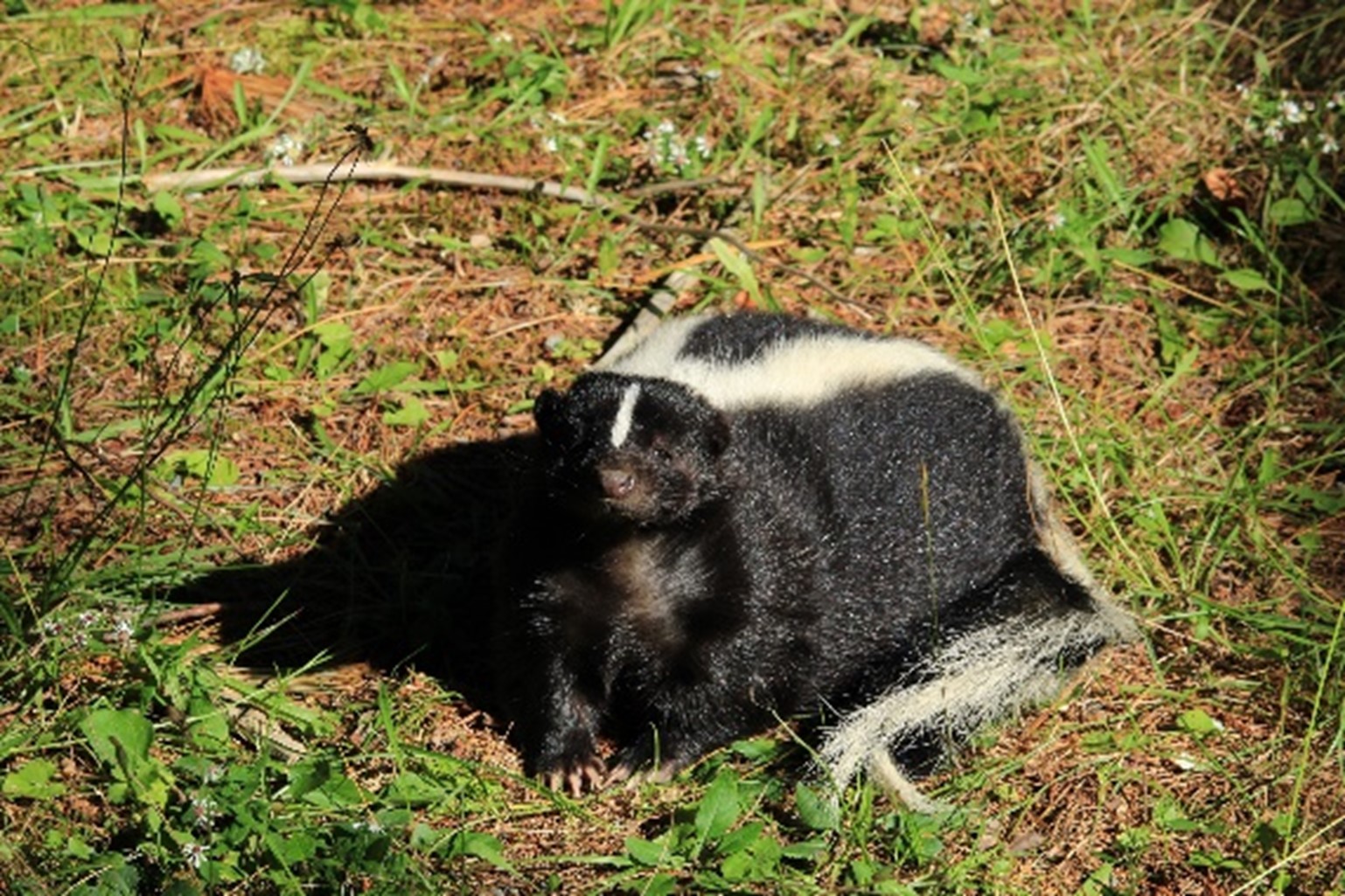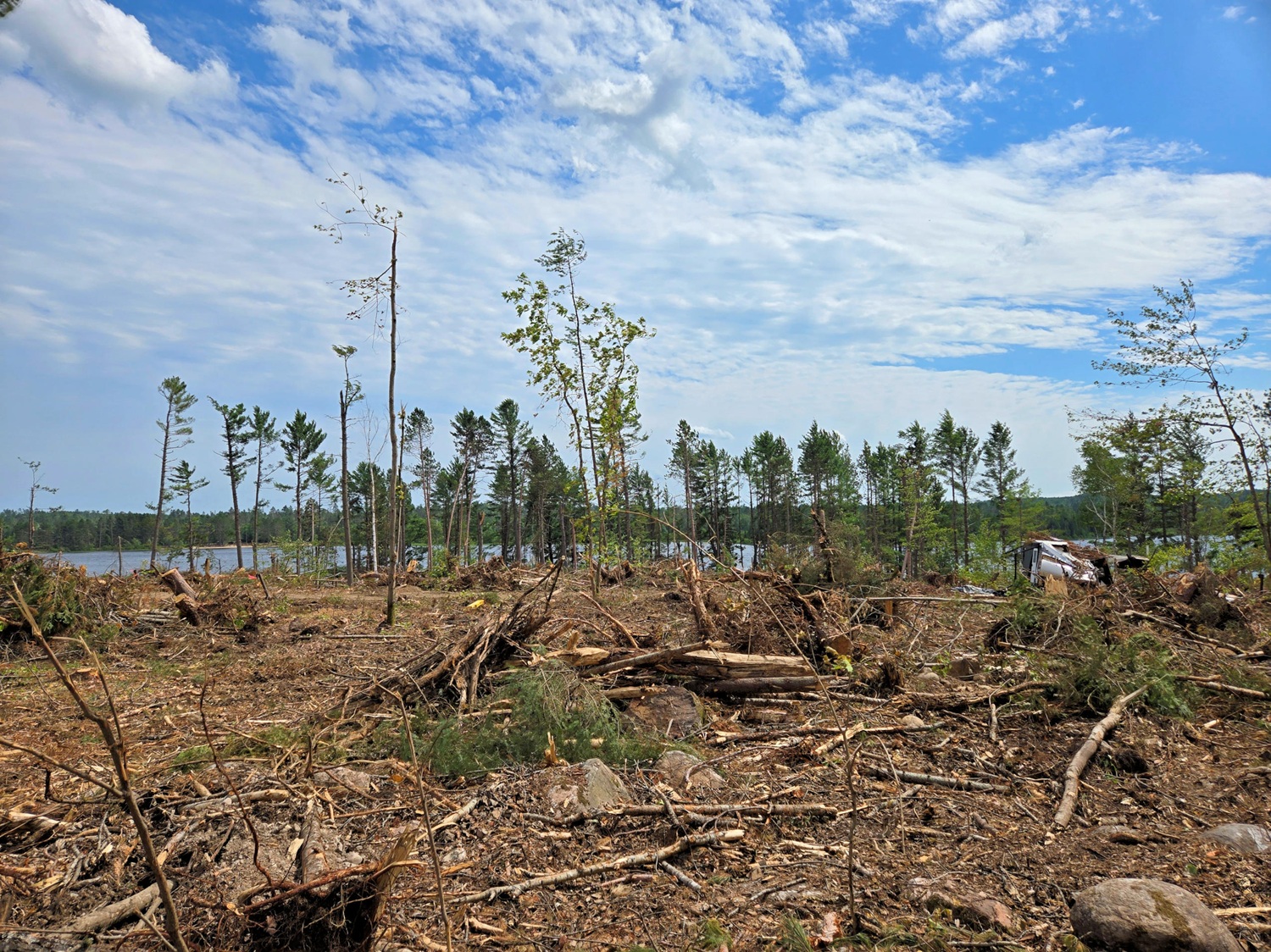
Today’s post comes from Sarah Wiebe, park interpreter at Rondeau Provincial Park.
When you think of spring birding at Rondeau Provincial Park, what do you imagine?

Colourful plumage? Unbelievable flocks of waterfowl? Beautiful birdsong? After all, spring is an exciting time for birding here, with many impatiently waiting for the arrival of warblers.
When I think of spring birding, though, I think of one of North America’s grossest and ugliest birds, and one of our earliest spring migrants.
These birds do not have the pretty call of a White-Throated Sparrow, the flashy colours of the Yellow Warbler, or even the love affair with grape jelly of the Baltimore Oriole.
Today, I want to introduce you to one of my favourite spring birds: the Turkey Vulture.
While others look for flashy warblers, Turkey Vultures are the unsung heroes of spring.
I will share some features and behaviours that make Turkey Vultures special, from their flying technique to the tricks they use to deter predators.
I hope I can change your mind about Turkey Vultures and convince you they are the ultimate spring bird.
~
They are the crime scene cleanup crew of the animal world
Turkey Vultures play an essential role in keeping our environment clean. Death happens, and these birds don’t shy away from a messy cleanup. Their scientific name (Cathartes aura) even means “cleansing breeze!”
They can smell dead animals or carrion from over 1.5 km away and have the largest olfactory system – the system that helps them smell – of any bird. Most birds have no sense of smell at all!
They can often be found along roadways with their heads in a carcass. They mostly feed on recently dead mammals, even skunks! Turkey Vultures have been known to daintily push aside a skunk’s scent glands and chow down.

The thought of this might make your stomach churn and you may be wondering: how do they eat rotting food and not get sick?
Turkey Vultures have incredibly strong immune systems and highly acidic stomach acid to kill the bacteria that cause things like botulism, anthrax, cholera, and salmonella.
These birds have been wrongly accused of spreading disease, but they actually do the exact opposite.
Without Turkey Vultures, dead animals would pile up and disease would be able to contaminate our water and soil. A Turkey Vulture is such a good cleaner that its stomach acid kills the bacteria and when it defecates, the risk of the disease is gone.
They will even wash their feet after by peeing on themselves – such considerate birds.
~
With such a disgusting job, Turkey Vultures come prepared
A Turkey Vulture’s odd appearance and behaviours are key to its survival.
One of the most striking features of the Turkey Vulture is its bright red and featherless head. They get their name from the turkey, which has a similar red head. This bald head allows them to get up close and personal with dead animals without getting their feathers messy and becoming a breeding ground for bacteria.

They also have strong beaks to help shred and tear meat from a carcass. Unlike other big raptors, Turkey Vultures have small talons and weak feet that are no good for capturing prey. Some even compare their feet to chicken feet.
Have you ever heard the beautiful call of a Turkey Vulture? Well, it’s unlikely. They don’t have the vocal organ that helps birds make songs, so they are left with a series of grunts and hisses.

They also have some bizarre behaviors. They’re easiest to remember by the three Ps:
- pick their noses – to get the rotting flesh out
- pee on themselves – to clean up and cool down on hot days
- puke on their enemies – if someone gets too close to their nest, they will projectile vomit partially digested rotting flesh and caustic stomach acid at their predators
~
While they may be the grossest birds around, they have a majestic way of flying!
Turkey Vultures harness the sun’s energy to soar to new heights.
For me, soaring Turkey Vultures always signal that spring is coming.

The flying “V” of a Turkey Vulture in the sky is always welcome and brings a smile to my face. With a wingspan of about 6 ft. (wider than my arms), they are majestic soarers with a teetering flight and rarely flap their wings.
~
Turkey Vultures work smarter, not harder
On sunny days, the flat ground is heated by the sun and the warm air rises, allowing the vulture to swoop upward with minimal effort.
Over areas with cooler air, like lakes and forests, they can glide down as the cool air sinks.
These are called thermals and allow them to glide to the ground to smell food and ride the thermals back up to higher vantage points.
Turkey Vultures can often be seen flying above Rondeau and occasionally roosting in trees along our walking trails.
A group of Turkey Vultures riding the air currents is called a kettle. They migrate from the Southern US to Canada each spring and fall. They can travel over 300 km/day and are some of the earliest spring migrants.
Lucky for us, Turkey Vulture populations have been increasing each year by nearly 2% since 1966.
Despite being impacted by lead poisoning, DDT and other toxins that their food may have ingested, they are thriving and continuing to clean up the grisliest of roadkill.
~
Three cheers for the Turkey Vulture!
Despite not being the most beautiful spring bird, they are certainly one of the most resourceful and deserve more credit.
Their cleanup crew abilities, peculiar appearance, and clever way of flying make this bird a must-see in spring!


